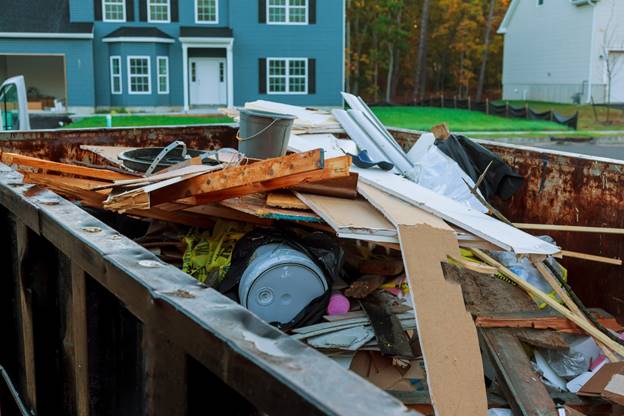According to a 2023 news post, over half of U.S. homeowners renovated one or more parts of their homes in the past year. They spent an estimated $427 billion on these home improvement projects.
This year, home improvement spending in the U.S. can rise further despite inflation. Experts even estimate it to reach $485 billion.
If you’re one of those folks wishing to improve your home, waste removal is one of the things you need to prepare for. One of the best tactics for this is to rent driveway dumpsters.
Dumpster rentals are available in many sizes and different dimensions. The larger they are, the more expensive their rental rates are. Therefore, choosing the right-sized container from the get-go is imperative.
To that end, we created this guide with tips on choosing the appropriate dumpster size. So read on; they can help you save money and avoid problems when renting a dumpster.
Understand Dumpster Size Terms
You’ll know the size of a rental dumpster based on its name, which starts with a number, followed by the term “yard.” You’ll often see them called 10-yard, 12-yard, 15-yard, 20-yard, 30-yard, or 40-yard dumpsters.
Those numbers pertain to each dumpster’s size, ranging from 10 to 40 cubic yards. They indicate the volume of waste the containers can hold and transport safely.
For example, a 10-yard driveway dumpster can haul and transport ten cubic yards of waste. A 12-yard one can accommodate up to 12 cubic yards, while a 15-yard can do up to 15 cubic yards. You get the gist.
Ten cubic yards of waste is similar to what four pick-up truck beds can hold. This is a good starting point to help you determine the right-sized dumpster to rent.
Factor in the Job Type
A driveway dumpster rental is ideal for garage clean-outs, landscaping, renovations, and remodeling. However, these projects create different types of waste with varying sizes and volumes. While larger-sized items are often heavier, smaller items may be just as or even weigh more than them.
Roofing materials, such as asphalt shingles, are a perfect example. The size of each shingle may not be impressive, but a “full square” (100 square feet) can weigh as much as 230 to 250 pounds. So if you’ll replace an entire roof measuring 1,500 square feet, that equates to 3,450 to 3,750 pounds of shingle waste.
By contrast, a single-car garage clean-out may create waste bigger than a roof shingle. This may include old toys, wood scraps, and fabrics. While they may be larger than shingles, they often weigh much less.
So, consider the project or job type to pick the right-sized driveway dumpster.
Consider the Type of Debris
Aside from expressing size in cubic yards, dumpsters also specify a maximum weight. You’ll find this limit measured in tons or tonnage.
Most standard 10- to 20-yard driveway dumpsters have a weight limit of 4,000 to 6,000 pounds. The chief difference is their dimensions. A 10-yard dumpster is shorter (in length and height) and narrower than its 12-, 15-, or 20-yard counterparts.
It’s essential to factor in the type of debris to ensure you don’t exceed the dumpster’s weight limit. If you need to dispose of bulky items you can’t compress, you may need to get a larger-sized container. Examples include concrete slabs, rocks, and furniture.
Also, as mentioned above, waste materials, such as asphalt shingles, can be heavy but not “big” in size. If you need to dispose of such debris, hire a specialty dumpster instead. You can find 10-yard specialty dumpsters with a maximum weight limit of 10 tons.
Prohibited Items in the Dumpster
Just because you can rent a 40-yard dumpster doesn’t mean you can throw all your unwanted stuff in it. No, you cannot, especially not if they fall under prohibited or hazardous waste.
An example of hazardous waste is electronic waste (e-waste), including all electronic gadgets. Every year, people worldwide generate about 40 million tons of such waste. It’s hazardous as these items can leach toxic heavy metals.
From computers to televisions to washers and toasters, these are all types of e-waste. You can’t dispose of these items in dumpsters, regardless if they’re big enough.
Another type of prohibited waste is a propane tank. Appliances, especially those containing refrigerants, are also not allowed. These include refrigerators and air conditioning systems.
Anything that contains batteries is also generally not allowed in dumpsters. The same goes for medical waste, motor oil, gas, paint, solvents, and other chemicals. The latter may include chemically-treated wood and furniture, depending on where you live.
The best way to determine which items you can throw in a rental dumpster is to call the provider. They can provide a comprehensive list of materials they allow or prohibit.
You can then use that information to gauge how much rubbish you can put in the dumpster. This can give you a better idea of which dumpster rental size suits your project.
Assess the Dumpster Drop-Off Location
Where you plan to store the dumpster is also a factor to consider when determining which size to get. The drop-off/storage location should be big enough to accommodate the waste container. It should also have easy property access and be free of obstructions.
If the dumpster is too big for your driveway, it can damage the surrounding area. For instance, it may wreak havoc on your garden or lawn.
You may even have to temporarily “park” the dumpster on the street or a public road. This can increase waste removal expenses, as you’d have to acquire and pay for permits.
Rent the Right-Sized Driveway Dumpsters
Remember: Choosing incorrectly sized driveway dumpsters can make your costs skyrocket. If you rent too-small containers, you’d pay more to have them dropped off and picked up multiple times. If you pick an oversized one, you’d also pay more for something you won’t need and use.
So, follow all our tips instead to avoid such costly issues.
Did you like this article? If so, check out our guide on keeping your garage clutter-free and organized!









